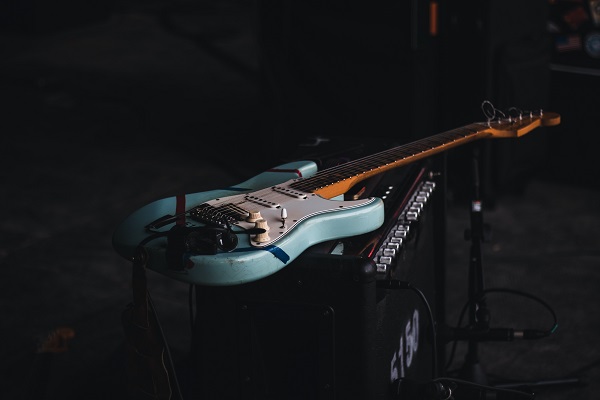
When I was planning to buy my first electric guitar, I was fascinated by all those Les Pauls and American Strats and disregarded anything that was less than a thousand bucks! The quest for quality Acoustic Guitar Strings was certainly a daunting one.
This was one of those moments where you want to get the great Guitar gadgets within your budget, but your mind doesn’t settle on one. Those high-end classics and vintage collector models are just too tempting.
Luckily, you don’t have to face the same dilemma. Here’s a quick guide that shows the exact steps I followed when deciding what guitar to buy.
If you’re looking for recommendations, the guys at Harmonyvine.com have curated an updated roundup of the best electric guitars for the money that you can check out.
But for now, let’s dive into a 5-step process to choose the right electric guitar for you!
1. Decide your Budget
First and foremost, it’s super important to set a budget. You should get the best guitar you can afford.
There’s no reason to spend $2000 on your first guitar. But at the same time, you don’t want to go super cheap and get a throwaway piece of wood.
Don’t make the same mistake of stretching just a couple hundred dollars to get that nice burst finish or that Floyd rose tremolo.
For beginners, you’ll find great guitars in the range of $200-$300. If you have some extra cash, there are some fantastic guitars in the $300-$600 segment.
Also, you MUST factor in the cost of an amp and set aside a budget for that too. A beginner amp usually costs around $100, so keep that in mind.
2. Choose a Body Type
Electric guitars come in 3 main body types: solid body, hollow body, and semi-hollow body.
Solidbody guitars, as the name suggests, are made from one single slab of wood. Although the choice of wood has some effect on the sound, mostly it’s the pickups doing the magic in these.
On the other hand, Hollowbody guitars are hollow like acoustic guitars. They produce more resonance but are also prone to feedback. Many jazz guitarists prefer these.
A semi-hollow is an amalgam of the two. These are hollow bodies with a solid center block added to the design.
3. Choose the Guitar Shape
There is a plethora of electric guitar shapes available in the market.
Designed by Fender, the Stratocaster is probably the most popular shape out there. It’s a highly versatile guitar and is well-known for its bright, spanky sound and tremolo bridge. These are great for rock, blues, and funk.
Another one from Fender, the Telecaster quickly became the “country guitar” and is still renowned for its distinctive “twangy“ sound. Although a Tele is quite popular in rock and blues as well.
Then comes the iconic Les Paul, originally developed by Gibson but now popular among other brands like ESP LTD, Epiphone, PRS, etc. The Les Paul embodies Rock ‘n’ Roll but will sound stellar in any genre.
There are also Superstrats which are basically modified versions of a Strat. These are all about offering more features and flexibility than a typical Strat. Jackson, Ibanez, and Charvel make some of the best superstrats in the market.
While you CAN play pretty much any style and genre on any guitar, some shapes are suited to a specific musical style more than others.
4. Don’t Forget the Hardware
The pickups, bridge, and tonewood are as crucial as the body style. The overall quality of the hardware will dictate how good your guitar sounds and feels.
You’ll come across two types of pickups:
- Single-coil pickups: These have a brighter and pluckier sound and are more suited for clean tones. Great for genres like blues, rock, and country music.
- Humbuckers: Humbuckers are double-coil pickups, or you can say a pair of single-coil pickups. These have a heavier sound and are more suited for genres involving high gain levels like metal and rock.
You have three options as far as the bridge is concerned: Hardtail bridges, Tremolo bridges, and Double-locking tremolos.
Hardtail bridges are fixed, whereas tremolo bridges have an attached arm that can be used to move the bridge to change the string’s pitch.
A Double-locking tremolo (or Floyd Rose) is similar to a tremolo bridge, except the strings are locked at the nut and bridge.
You can go with any of them as a beginner, but Floyd Rose bridges are harder to maintain and clean.
5. Have Fun!
Last but not least, spend some quality time with your beloved instrument. You’re going to appreciate it more and more as you progress as a musician.
If you’ve never played the guitar before, I highly suggest you visit a local store to try them out in person. Nothing’s more annoying than owning an instrument that you don’t enjoy anymore.
I hope this guide has brought you one step closer to your guitar journey.
Thanks for reading!





